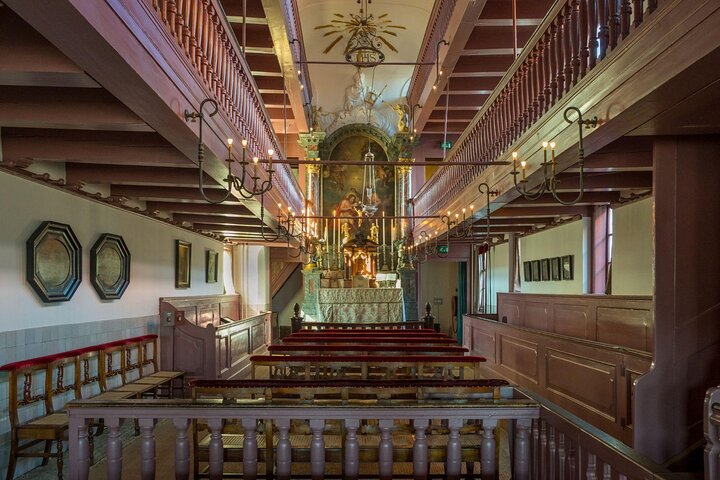Hidden Sanctuaries in the Heart of Amsterdam
In the 17th century, Amsterdam was a bustling hub of trade and culture, yet it was also a city where religious tolerance was not extended to all. The Dutch Reformed Church was the only legally recognized church, leaving Catholics and other religious minorities to find creative ways to practice their faith. This led to the creation of hidden churches, ingeniously concealed within the city's architecture.
The Ingenious Design of Ons' Lieve Heer op Solder
One of the most famous examples is Ons' Lieve Heer op Solder, or "Our Lord in the Attic." This clandestine church is tucked away in the attic of a canal house on Oudezijds Voorburgwal. Built in 1663, it features a stunning altar and seating for up to 150 people, all hidden behind the facade of a typical Amsterdam home. The church's design cleverly utilizes the narrow, tall structure of the house, with a spiral staircase leading visitors from the ground floor to the attic sanctuary.

The Role of Wealthy Merchants

Wealthy Catholic merchants played a crucial role in the establishment of these hidden churches. They often financed the construction and maintenance of these secret spaces, ensuring that their communities could continue to worship. These merchants used their homes and warehouses, transforming them into places of worship that could be quickly disguised as private residences or businesses if necessary.
Architectural Features and Challenges
The architecture of these hidden churches had to be both functional and discreet. Builders often used existing structures, modifying them to include altars, pews, and confessionals. The challenge was to maintain the appearance of a regular home or business from the outside. This required innovative solutions, such as soundproofing to muffle the sounds of services and strategically placed windows to allow light without revealing the church's true purpose.
Legacy and Preservation
Today, many of these hidden churches have been preserved as museums, offering a glimpse into a unique aspect of Amsterdam's history. Ons' Lieve Heer op Solder, for example, is now a museum open to the public, allowing visitors to explore its beautifully preserved interior and learn about the city's religious history. These sites serve as a testament to the resilience and ingenuity of Amsterdam's religious minorities during a time of persecution.











